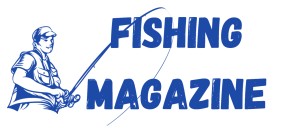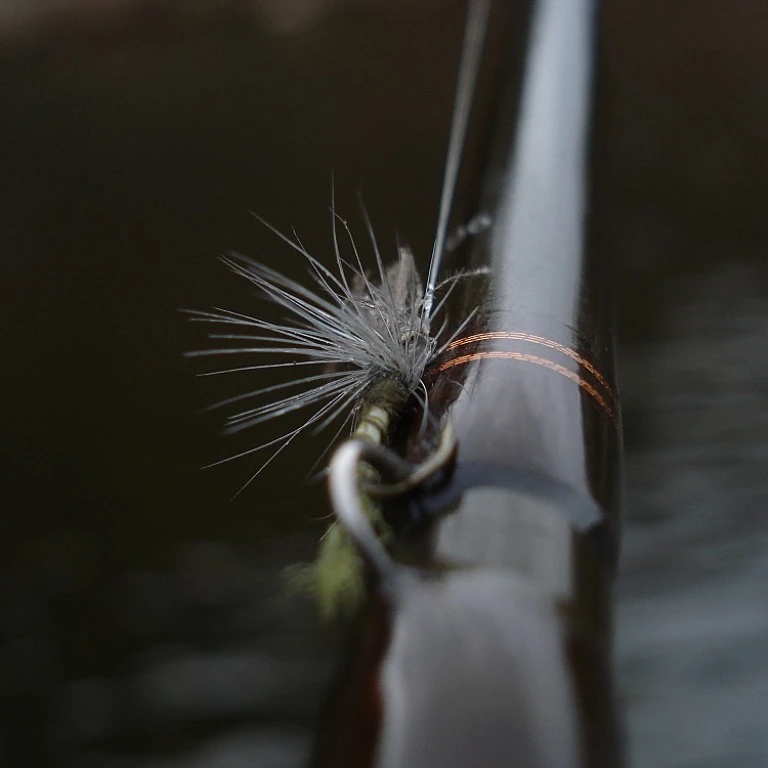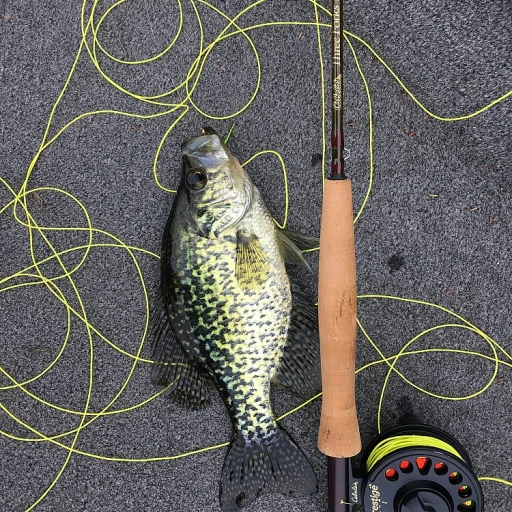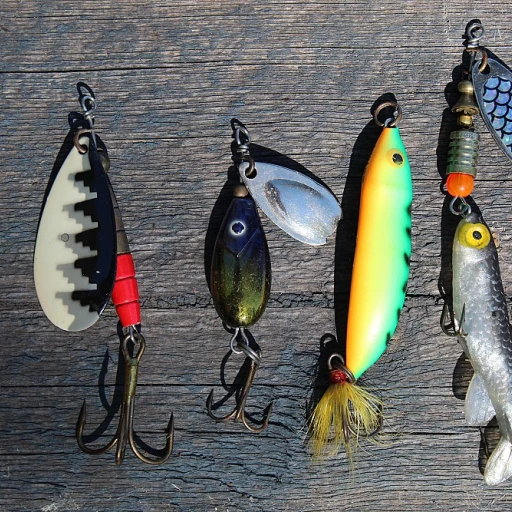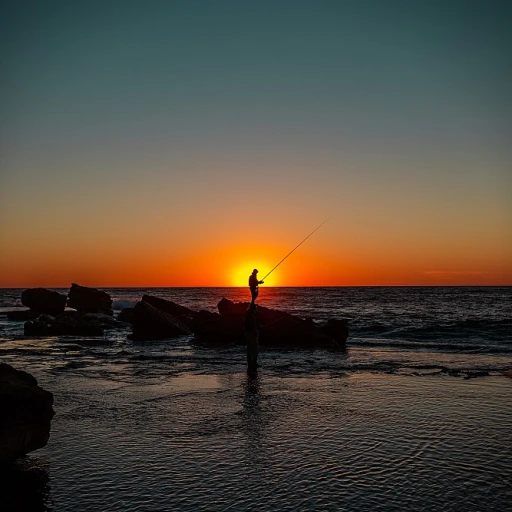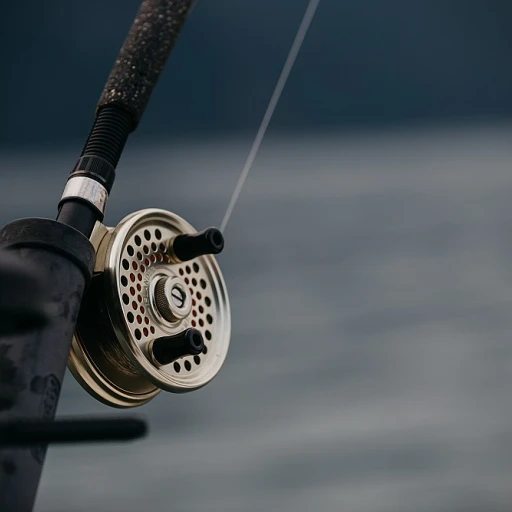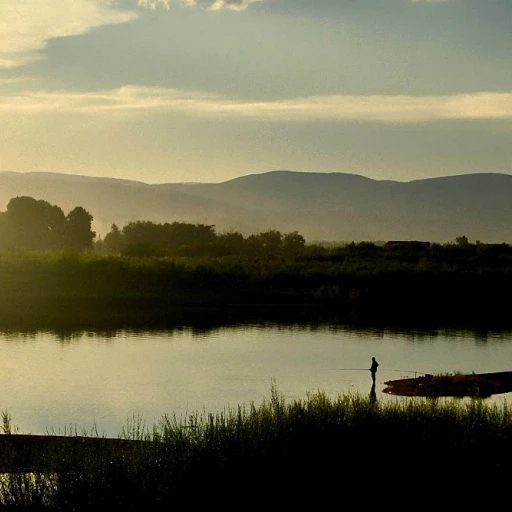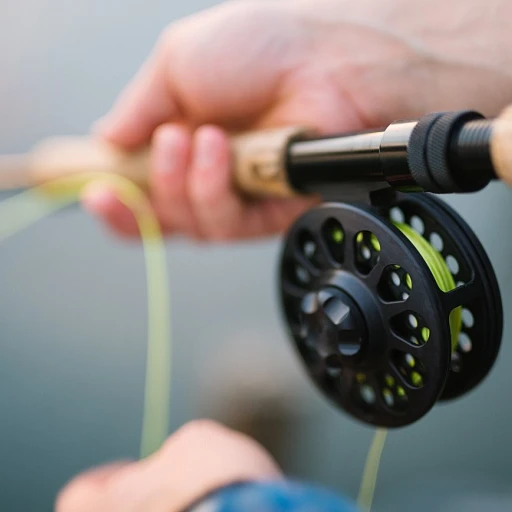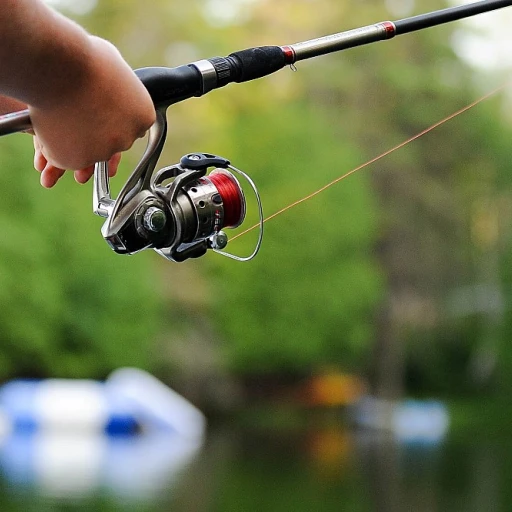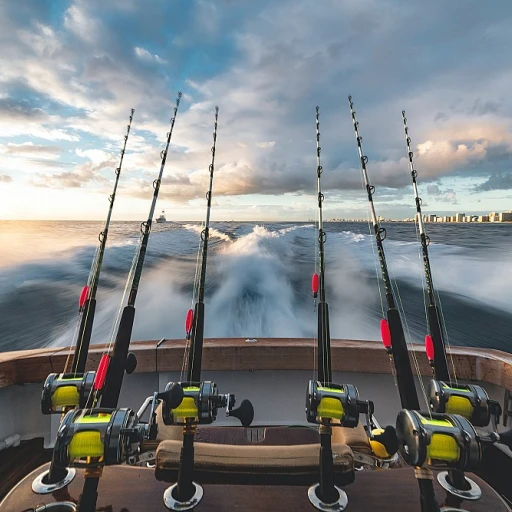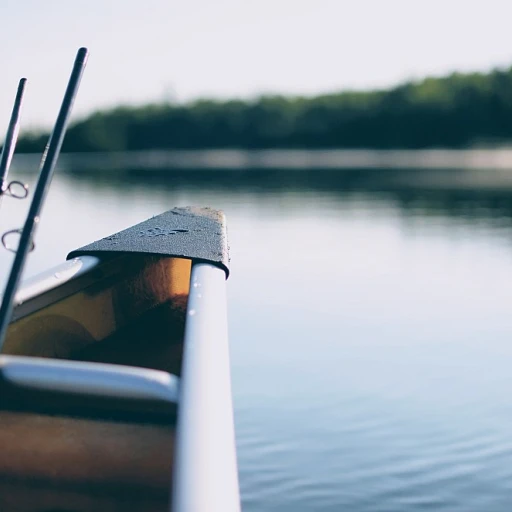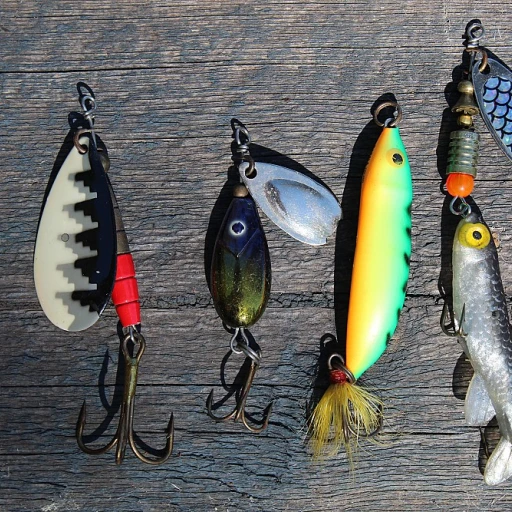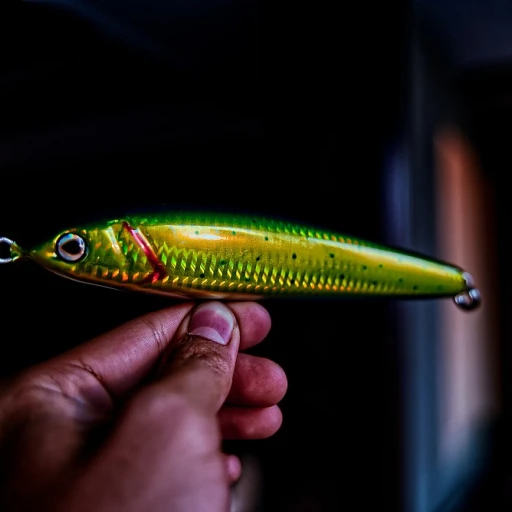
The Basics of Fly Hook Sizes
Diving into the World of Fly Hook Sizes
Understanding fly hook sizes is crucial for any angler aiming for a successful catch. When mulling over your fishing strategy, the size of your hook will greatly influence the types of fish you can target and the fly patterns you can execute. Fly hooks come in various sizes, and each corresponds to different functionalities. Typically, the size is dictated by the hook’s shank length and gape width. Fly hooks are numerically sized, and it’s imperative to grasp that the numbering is somewhat counterintuitive. Smaller numbers denote larger hooks, while larger numbers indicate smaller hooks. For instance, a size 8 hook is actually more considerable than a size 16. When venturing into fly fishing for brown trout or similar species, selecting the right hook size is vital for replicating the size and shape of the insects in the trout's diet. A deeper insight into these sizes can lead you to crafting and tying flies that match perfectly with your target fish species and water conditions. Dry flies often require hooks with finer wire to ensure they float effortlessly, while nymphs might demand heavier hooks for effective sinking. For those new to fly tying, it's important to note that adaptations in hook size will affect your overall fly size. By understanding these fundamentals, you delve into the artistry of imitation, a crucial aspect of fly fishing. If you’re intrigued by the intricacies of fly tying, particularly how elements like wood duck feathers can enhance your crafting, consider exploring resources that celebrate such unique materials the allure of wood duck feathers in fly tying. Each pattern and fish species might call for different sizes, making it an essential tool in your fishing toolkit. This knowledge lays the groundwork for deciphering fly hook size charts and further perfecting your angling skills.How to Read a Fly Hook Size Chart
Decoding the Fly Hook Size Chart
Reading a fly hook size chart can seem daunting at first, but once you get the hang of it, it becomes an invaluable tool in your fly fishing arsenal. The sizes of hooks are usually indicated by a number, where a smaller number signifies a larger hook. Understanding this counterintuitive scale is key for selecting the right hook for your fly patterns, especially when targeting species such as trout. Fly hooks come in various sizes and each is designed for specific fly patterns, such as dry flies or nymphs. For instance, a larger size hook is typically suited for larger flies and fish, whereas smaller hooks are necessary for tying intricate dry flies used for selective fish species in calmer water. When referencing a chart, you'll notice not just the hook size, but also the hook shank length. This is crucial for fly tying as the shank length will influence how your fly moves in the water, impacting its effectiveness in imitating natural fish food. Additionally, understanding the gauge of the wire, often denoted on size charts, ensures your hook can withstand the test against a fighting fish without compromising on the subtlety needed for cautious trout. It's also essential to match your hook size with your tippet size. Using a tippet that is too thick or too thin for your hook size can result in poor casting performance or even losing your prized fish. Learning how to interpret these multiple aspects of a fly hook size chart correctly not only improves your fly fishing experience but also enhances your ability to customize your flies for diverse fly fishing challenges. To further refine your skills in choosing the right fly size and hook, you might consider mastering techniques through different resources, such as mastering midge fly fishing.Factors Influencing Hook Size Selection
Choosing the Right Hook Size for Different Fishing Scenarios
Selecting the appropriate fly hook size can greatly impact your fly fishing success, particularly when targeting different fish species like trout. This section will help you understand the key considerations that influence hook size selection and avoid common errors when interpreting a fly hook size chart.
When choosing a hook size, water conditions play a crucial role. For instance, in larger bodies of water, larger hooks can accommodate bigger catches. Conversely, smaller hooks are more suitable for targeting small fish or when fishing in tight spots.
Fly patterns are another critical consideration. Some flies, like dry flies andnymphs, have distinctive tying requirements that can affect the fly size to fish ratio. The cls or classic hooks might suit traditional fly tying, while modern designs cater to innovative patterns. The hook shank length is also decisive as it influences the fly's appearance and performance when presented to trout or other species.
Fishing conditions such as wind and tippet size further influence your hook choice. For windy conditions, heavier hooks may be preferred to aid in casting. Adjusting the size fly or fly sizes to match the prevailing wind can improve presentation and lead to better fishing success.
While chart specifics give a rational basis for selecting hook sizes, practical on-water experience often refines decisions. Seasoned anglers might prefer certain sizes over others based on personal preference and success rates with fishing flies. This balance of theory and practice ultimately guides the fly fishing enthusiast towards informed decisions.
To further enhance your fishing craft, consider exploring the benefits of a trolling motor to effectively cover larger fishing areas. Find out more about enhancing your fishing trips.
Common Mistakes When Using Fly Hook Size Charts
Missteps to Watch Out For
When it comes to understanding fly hook size charts, several common pitfalls can sideline even the most experienced anglers. Being aware of these mistakes can save you time, frustration, and help optimize your fishing experience.- Mismatched Size and Fly Pattern: A frequent oversight is selecting a hook size that doesn't match the intended fly pattern. For example, opting for a dry fly that's too large for delicate mayfly patterns can deter fish, especially trout in calm waters. Ensure your hook sizes align seamlessly with your fly patterns for optimal presentation.
- Ignoring Water Conditions: Different water conditions can influence your choice of hook size. For instance, larger fly hooks might be needed for turbulent waters, where larger flies will stand out better. Conversely, calm waters may require smaller hooks and flies to entice shy fish species more gently.
- Neglecting Fish Species Preferences: Each fish species has its own preference. Brown trout, for example, might react differently to certain fly sizes compared to other species. Tailoring your fly hook size to the fish species can dramatically improve your catch rates.
- Overlooking Tippet and Shank Length: Attention to the hook shank and tippet can impact your presentation. Mismatches in hook shank length and tippet size can hinder the fly's natural drift, reducing the efficacy of the fishing flies.
- Relying Solely on Charts: While hook size charts are crucial, they aren't the ultimate decision-makers. It's important to integrate your personal experience and circumstances on the water. Factors like tying techniques and casting skills play significant roles too.
Innovations in Fly Hook Design
Exploring Innovations in Fly Hook Design
Fly fishing has evolved significantly over the years, and one of the notable advancements is seen in fly hook design. Traditional hook sizes have expanded to include various innovations that cater to specific fishing needs, effectively enhancing the angler's experience and success rate. These innovations often focus on enhancing the functionality and effectiveness of hooks across different fishing conditions. Changes in hook shank length, thickness, and curve have been introduced to better suit various fly patterns and fish species. For instance, a longer shank might be preferred for certain types of dry flies where extra space is needed to tie intricate patterns. Conversely, a shorter shank could be optimal for nymphs, allowing them to more naturally mimic aquatic insects underwater. Manufacturers have also improved materials used in hooks, increasing their strength and durability while reducing weight. Lightweight materials can make a significant difference when tying flies, particularly in smaller sizes for delicate presentations, such as when targeting brown trout in clear water conditions. Moreover, some innovations are in response to common mistakes anglers make, such as selecting a too-large or too-small hook size for the flies they are tying. Understanding the nuances of hook sizes can prevent these mistakes, leading to better fly tying outcomes. Additionally, with the plethora of hooks available on the market today, many companies are focusing on ethical and environmentally friendly production, using materials and processes that reduce harm to aquatic ecosystems. This is increasingly important as sustainable fishing practices continue to gain traction within the fly fishing community. By staying informed about these developments in hook design and incorporating them into your fishing strategy, you can maximize your fly fishing efforts, whether you're aiming for trophy trout or experimenting with new fly patterns in varied fishing environments.Tips for Organizing Your Fly Hooks
Efficiently Storing and Accessing Your Fly Hooks
Keeping your fly hooks organized can be an indispensable part of ensuring a productive day out on the water. Not only does it help manage different hook sizes for specific fly patterns, but it also makes the selection process more efficient when transitioning between dry flies and nymphs.- Use a Tackle Box with Compartments: A tackle box that has multiple compartments is a great way to keep hooks segregated based on size, type, and purpose. This system allows for easy access when you're trying to find a size hook quickly during an urgent moment while fishing.
- Label Each Section: Clearly label the compartments with the size and type of fly hook they contain. This simple step can save significant time, especially when you're tying flies in preparation for your next brown trout fishing excursion.
- Protect from Moisture: Ensure that your storage system keeps hooks dry to maintain their integrity. Moisture can cause rust and degrade the hook shank, resulting in weaker hooks. For fly fishing enthusiasts who often wade into water-filled areas, this is crucial.
- Sort by Fly Patterns: Arrange hooks according to your preferred fly patterns, such as dry, nymphs, and specific fishing flies. This helps streamline the fly tying process whenever you have a targeted fly size in mind.
